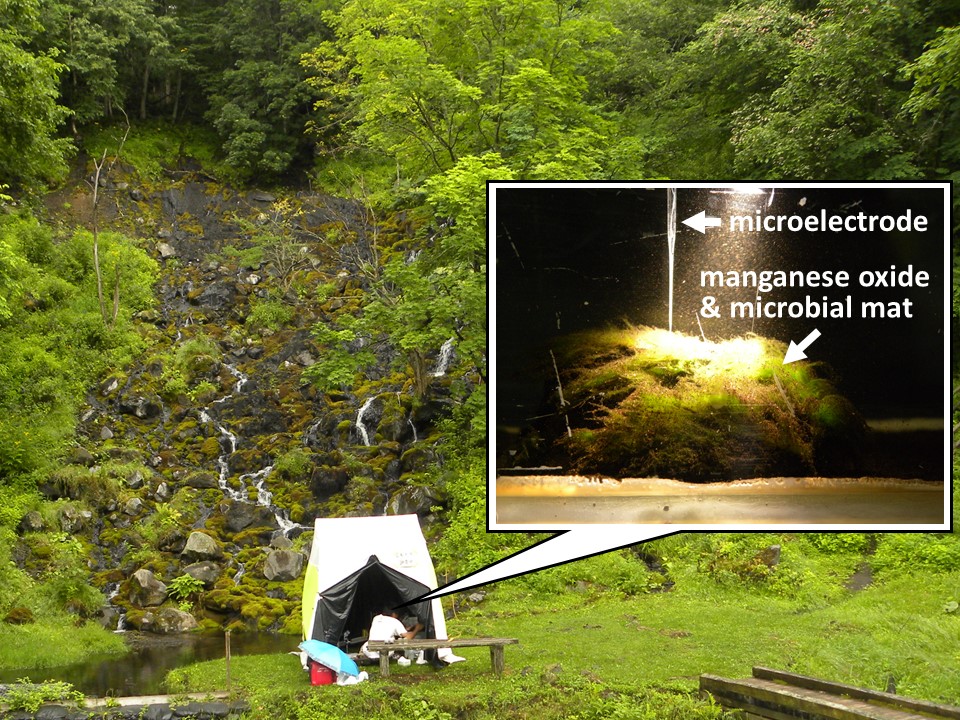Key points of this research results
- It was revealed that the photosynthesis of green algae cannot cause manganese oxidation in Yunotaki Falls in Hokkaido due to relatively low pH in the bulk.
- Similarly, the effect of photosynthesis on manganese oxide formation in Precambrian ocean is considered to be limited due to relatively low pH.
Outline
It is becoming clear that microorganisms play an important role in the formation of manganese oxides in natural environments. Manganese oxide formed at Yunotaki Falls in Hokkaido was also thought to be oxidized by manganese-oxidizing bacteria, which was further promoted by the oxygen released by algae, although the actual reaction was unknown.
In this study, we evaluated the contribution of photosynthesis to manganese oxidation by applying local water chemistry analysis using microelectrodes in addition to bulk water chemistry analysis and DNA analysis. The investigated deposit surface was covered with a thick microbial mat consisting of cyanobacteria, algae, and manganese-oxidizing bacteria. Microelectrode measurements near the deposit surface showed pH and O2 concentrations characteristic of oxygenic photosynthesis and aerobic respiration.
On the other hand, the Mn concentration showed almost the same profile under both light and dark conditions, and decreased on the surface and inside of the mat. This indicates that the manganese oxidation reaction is not promoted by photosynthesis due to the low pH in the bulk hot spring water, despite the concomitant active photosynthesis.

Paper Info
Shiraishi F., Chihara R., Tanimoto R., Tanaka K., Takahashi Y. (2022) Microbial influences on manganese deposit formation at Yunotaki Fall, Japan. Island Arc 31, e12448.

 Home
Home



